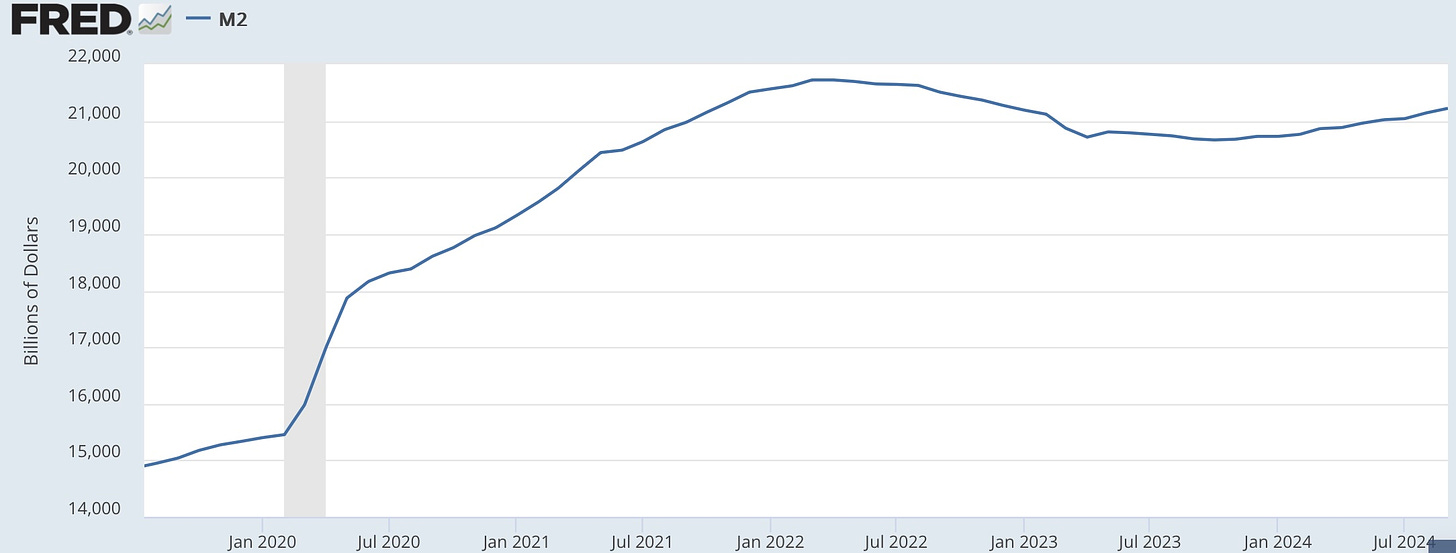by David Haggith, Gold Seek:

It’s very interesting—too interesting for the Fed’s liking. The Fed is a lone ranger, trying to send interest rates down, but it finds itself surrounded by outlaw vigilantes in the bushes of financial markets who are shooting interest rates up. The Fed has lost control of the markets. It’s a dark day in the Fed world.
Bond guru Jeffrey Gundlach says, in a video linked to below, that the reason interest rates are going up since the Fed set out on a path to lower them is that bond investors are starting to worry about how we are going to finance the nation’s massive deficits.
TRUTH LIVES on at https://sgtreport.tv/
Currently, he says, having a lot of experience with bonds may not even be a positive because experience makes you think you can map where the present action is going to go based on normal dynamics. We are in a time of abnormal dynamics where bond interest is not going where experience says it should, which would be where the Fed says it should. Bonds may not even do what we normally expect them to do in a recession.
Meanwhile, Adam Taggart’s guest, in an interview linked to, says that the dynamic has changed so much in a vigilante rebellion against the Fed that bonds are basically uninvestable right now. Adam suggests we may face a situation where …
Central banks have to abandon their inflation-fighting mandate because, at the end of the of the day, their supreme priority is to keep the [government] debt serviceable because, if that is no longer the case then bond vigilantes take the market market yields much higher. Then the debt service gets even worse, and you get this vicious cycle.
Then, asking his guest if that is the precipice we are caught on right now, the guest responds …
Yeah, that is…. We’re already seeing bond volatility get back to problematic levels…. The mistake this time was that the rules are different when you have debt-to-GDP at 130%.
Bond investors are already seeing the writing on the wall. They are already fearing, as Gundlach says, that the federal government will get caught in that vicious cycle of more and more expensive debt as the government continues to pile on more debt. It appears to me they’ve lost faith with the Fed’s ability to bring the cost of that debt service down, but there is another big, integrated piece to the puzzle—inflation.
The first episode of this kind of interest rebellion, Taggart’s guest says, was in 2019 with the repo crisis—a Fed fail I reported and prognosticated about at length, leading up to it and then going through it, where the Fed was forced back to QE by financial markets in order to end the turmoil in financial markets that came from its tightening.
Control was wrested from the Fed by banks driving interbank lending rates into the stratosphere after the Fed had claimed its QT would continue indefinitely on auto pilot and be as boring as watching paint dry. QT did the exact opposite and blew out interbank lending as market forces took over. The Fed didn’t want to lose face by going back to QE, so it kept insisting it was not doing QE, in spite of its huge bond buying until—as it did with its argument that inflation was transitory—it finally gave up the insisting and just went full QE, backed by the excuse Covid created.
A different kind of financial war
Now we see a different kind of turmoil building in financial markets in response to Fed easing where bond investors don’t believe the Fed has beaten inflation, and they don’t believe Treasuries with such high and constant government debt requirements can continue to justify the lower rates the Fed is pushing for. Remember that most interest rates are pegged off of Treasury bonds—particularly the 10YR. So, when bonds don’t cooperate, then no interest rates cooperate.



